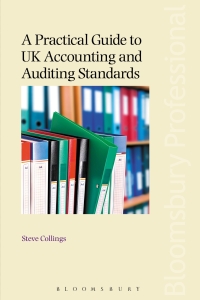



Paul Sabin organized Sabin Electronics 10 years ago to produce and sell several electronic devices on which he had secured patents. Although the company has been fairly profitable, it is now experiencing a severe cash shortage. For this reason, it is requesting a $500,000 long-term loan from Gulfport State Bank, $100,000 of which will be used to bolster the Cash account and $400,000 of which will be used to modernize equipment. The company's financial statements for the two most recent years follow: Sabin Electronics Comparative Balance Sheet This Year Last Year $ $ Assets Current assets: Cash Marketable securities Accounts receivable, net Inventory Prepaid expenses 70,000 0 480,000 950,000 20,000 150,000 18,000 300,000 600,000 22,000 Total current assets Plant and equipment, net 1,520,000 1,480,000 1,090,000 1,370,000 Total assets $3,000,000 $ 2,460,000 Liabilities and Stockholders Equity Liabilities: Current liabilities Bonds payable, 12% $ 800,000 600,000 $ 430,000 600,000 Total liabilities 1,400,000 1,030,000 Stockholders' equity: Common stock, $15 par Retained earnings 750,000 850,000 750,000 680,000 Total stockholders' equity 1,600,000 1,430,000 Total liabilities and equity $3,000,000 $ 2,460,000 Sabin Electronics Comparative Income Statement and Reconciliation This Year Sales $5,000,000 Cost of goods sold 3,875,000 Last Year $ 4,350,000 3,450,000 Gross margin Selling and administrative expenses 1,125,000 653,000 900,000 548,000 Net operating income 472.000 352.000 Sabin Electronics Comparative Income Statement and Reconciliation This Year Sales $5,000,000 Cost of goods sold 3,875,000 Last Year $ 4,350,000 3,450,000 Gross margin Selling and administrative expenses 1,125,000 653,000 900,000 548,000 Net operating income Interest expense 472,000 72,000 352,000 72,000 Net income before taxes Income taxes (30%) 400,000 120,000 280,000 84,000 Net income Common dividends 280,000 110,000 196,000 95,000 Net income retained Beginning retained earnings 170,000 680,000 101,000 579,000 Ending retained earnings $ 850,000 $ 680,000 During the past year, the company introduced several new product lines and raised the selling prices on a number of old product lines in order to improve its profit margin. The company also hired a new sales manager, who has expanded sales into several new territories. Sales terms are 2/10, n/30. All sales are on account. Assume that Paul Sabin has asked you to assess his company's profitability and stock market performance. Required: 1. You decide first to assess the company's stock market performance. For both this year and last year, compute: a. The earnings per share. There has been no change in common stock over the last two years. (Round your answers to 2 decimal places.) This Year Last Year Earnings per share b. The dividend yield ratio. The company's stock is currently selling for $40 per share; last year it sold for $36 per share. (Do not round intermediate calculations. Round your percentage answers to 1 decimal place (i.e., 0.123 should be entered as 12.3).) This Year Last Year Dividend yield ratio % % c. The dividend payout ratio. (Do not round intermediate calculations. Round your percentage answers to 1 decimal place (i.e., 0.123 should be entered as 12.3).) This Year Last Year Dividend payout ratio % % d. The price-earnings ratio. (Do not round intermediate calculations. Round your answers to 2 decimal places.) This Year Last Year Price-earnings ratio e. The book value per share of common stock. (Round your answers to 2 decimal places.) This Year Last Year Book value per share pule ule year: a. The gross margin percentage. (Round your percentage answers to 1 decimal place (i.e., 0.123 should be entered as 12.3).) This Year Last Year Gross margin percentage % % b. The net profit margin percentage. (Round your percentage answers to 1 decimal place (i.e., 0.123 should be entered as 12.3).) This Year Last Year Net profit margin percentage % % C. The return on total assets. (Total assets at the beginning of last year were $2,300,000.) (Round your percentage answers to 1 decimal place (i.e., 0.123 should be entered as 12.3).) This Year Last Year Return on total assets % % d. The return on equity. (Stockholders' equity at the beginning of last year was $1,329,000.) (Round your percentage answers to 1 decimal place (i.e., 0.123 should be entered as 12.3).) This Year Last Year Return on equity % %










